Vermont Casting 3095, 3112, 3096, 3097, 3100 User Manual
...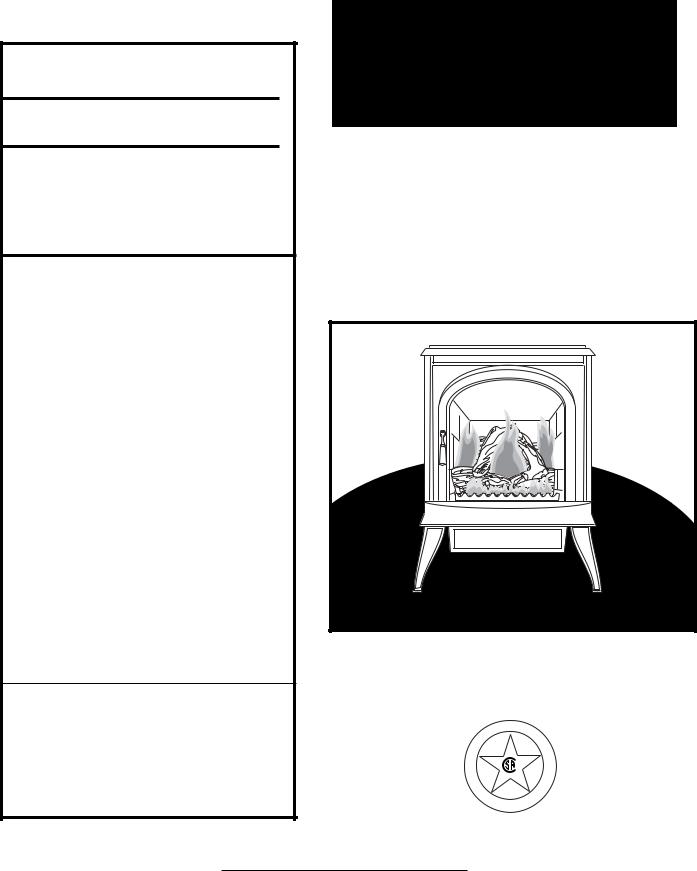
INSTALLER / CONSUMER SAFETY INFORMATION
Please read this manual before installing and using appliance.
WARNING: If the information in this manual is not followed exactly, a fire or explosion may result causing property damage, personal injury or loss of life.
—Do not store or use gasoline or other flammable vapors and liquids in the vicinity of this or any other appliance.
—WHAT TO DO IF YOU SMELL GAS
•Do not try to light any appliance.
•Do not touch any electrical switch; do not use any phone in your building.
•Immediately call your gas suppler from a neighbor’s phone. Follow the gas suppler’s instructions.
•If you cannot reach your gas supplier, call the fire department.
Installation and service must be performed by a qualified installer, service agency or the gas supplier.
This is an unvented gas-fired heater. It uses air (Oxygen) from the room in which it is installed. Provisions for adequate combustion and ventilation air must be provided. Refer to Page 7.
Jefferson®
Vent Free Gas Heater
Models: JUVSR & JUVSM 3095, 3096, 3097, 3100, 3101, 3102, 3105, 3106, 3107, 3110, 3111, 3112
Homeowner’s Installation
and Operation Manual
E |
S |
|
IG |
N |
|
D |
|
C |
D |
E |
|
|
RTIFIE |
Vermont Castings, Majestic Products
410 Admiral Blvd. • Mississauga, Ontario, Canada L5T 2N6 • 905-670-7885 www.majesticproducts.com • www.vermontcastings.com
INSTALLER: DO NOT DISCARD THIS MANUAL - LEAVE FOR HOMEOWNER
20003447 6/03 Rev. 6

Vermont Castings Jefferson Vent Free Gas Heater
Table Of Contents
PLEASE READ THE INSTALLATION & OPERATING INSTRUCTIONS BEFORE USING APPLIANCE. Thank you and congratulations on your purchase of a Vermont Castings stove.
IMPORTANT: Read all instructions and warnings carefully before starting installation. Failure to follow these instructions may result in a possible fire hazard and will void the warranty.
Installation and Operating Instructions ....................................................................................... |
3 |
JUVS Dimensions .............................................................................................................. |
4 |
Clearance Requirements ................................................................................................... |
5 |
Hearth Requirements ......................................................................................................... |
5 |
Gas Specifications ............................................................................................................. |
6 |
Gas Inlet and Manifold Pressures ...................................................................................... |
6 |
High Elevations .................................................................................................................. |
6 |
Odor During Operation ....................................................................................................... |
6 |
Vent Free Features ............................................................................................................ |
7 |
Fresh Air Requirements ..................................................................................................... |
7 |
Assembly Procedures |
|
Unpack the Stove ............................................................................................................... |
9 |
Install Optional Fan Kit ....................................................................................................... |
9 |
Install ON/OFF Switch ...................................................................................................... |
10 |
Thermostat Connections .................................................................................................. |
11 |
Connect the Gas Supply LIne .......................................................................................... |
11 |
Install Log Set .................................................................................................................. |
11 |
Install Stove Front ............................................................................................................ |
12 |
Operation |
|
Your First Fire .................................................................................................................. |
13 |
Pilot and Burner Inspection .............................................................................................. |
13 |
Flame & Temperature Adjustment ................................................................................... |
13 |
Flame Characteristics ...................................................................................................... |
13 |
Lighting Instructions ......................................................................................................... |
14 |
Troubleshooting ............................................................................................................... |
15 |
Maintenance |
|
Firebox Cleaning and Inspection ...................................................................................... |
17 |
Cleaning Procedure ......................................................................................................... |
17 |
Care of Cast Iron .............................................................................................................. |
17 |
Replacement Parts ....................................................................................................................... |
18 |
Optional Accessories |
|
Fan Kits ............................................................................................................................ |
20 |
Remote Controls .............................................................................................................. |
20 |
Warranty ....................................................................................................................................... |
22 |
2 |
20003447 |

Vermont Castings Jefferson Vent Free Gas Heater
Installation & Operating Instructions
In order to ensure safe and effective installation, this unit must be installed only by a qualified agency, individual, firm, corporation or company that is experienced in the installation, repair and servicing of this type of appliance and is familiar with the building codes and installation techniques appropriate in your area. Contact your hearth products dealer or local gas supplier for the name of a qualified service person.
IMPORTANT: Read this owner's manual carefully and completely before trying to assemble, operate, or service this heater. Improper use of this heater can cause serious injury or death from burns, fire, explosion, electrical shock, and carbon monoxide poisoning.failure to follow instructions may result in property damage, bodily injury or loss of life. This manual contains important user information. Keep this manual with the heater after installation is complete.
FOR SAFE INSTALLATION AND OPERATION, PLEASE NOTE THE FOLLOWING:
1.Use only Natural Gas with JUVSRN/MN. Use only Propane with JUVSRP/MP. Do not use any other fuels.
2.Install only in accordance with the National Fuel Gas Code, ANSIZ223.1/NFPA54-latest edition. (Exception: Do not derate this appliance for altitude. This appliance has been tested and listed for use in altitudes up to 10,000 feet.)
3.Use only the installation instructions provided by the manufacturer for this appliance. Installation and repair should be done by a qualified service person. The appliance should be inspected before use and at least annually by a professional service person. More frequent cleaning may be required due to excessive lint from carpeting, bedding material, etc. It is imperative that control compartments, burners and circulating air passageways of the appliance be kept clean.
4.Warning: Any change to this heater or its controls can be dangerous. DO NOT make modifications to any heater or associated parts.
5.DO NOT install this heater in a bedroom or bathroom.
6.Due to high surface temperatures, DO NOT install this heater
•in a recreational vehicle,
•where curtains, furniture, clothing or other flammable objects are less than 36 inches from the front, top or sides of the heater,
•in high traffic areas,
•in windy or drafty areas.
7.DO NOT place clothing or other flammable material on or near the appliance.
8.DO NOT obstruct the top grille at all. Doing so will cause high levels of carbon monoxide that will lead to death.
CARBON MONOXIDE POISONING
MAY LEAD TO DEATH!
Carbon Monoxide Poisoning: Early signs of carbon monoxide poisoning resemble the flu, with headaches, dizziness, or nausea. If you have these signs, the heater may not be working properly. Get fresh air at once! Have the heater serviced. Some people are more affected by carbon monoxide than others. These include pregnant women, people with heart or lung disease or anemia, those under the influence of alcohol, and those at high altitudes.
9.This heater needs fresh, outside air ventilation to operate properly. See Fresh Air Requirements on pages 7 and 8.
10.If heater shuts off, heater may not have enough fresh air ventilation. Provide more fresh air. If heater keeps shutting off, refer to Troubleshooting.
11.DO NOT operate this heater
•where flammable liquids or vapors are used or stored
•under dusty conditions.
12.The heater becomes very hot when operating. Alert children and adults to stay away from hot surfaces to avoid burns or clothing ignition. The heater will remain hot for a time after shutdown. Allow surface to cool before touching.
13.Carefully supervise young children when they are in the room with the heater.
14.Do not use the heater if any part has been exposed to or under water. Immediately call a qualified service technician to inspect the room heater and to replace any part of the control system and any gas control which has been under water.
15.DO NOT operate the heater if any log is broken or damaged.
16.Turn heater off and let cool before servicing. Only a qualified service person should service and repair heater.
17.DO NOT operate this appliance with the safety screen removed. If the safety screen is removed from the appliance for service or cleaning, it must be replaced before operating the heater.
NOTE: If any of the original wire as supplied with the appliance must be replaced, it must be replaced with a wire of at least 105°F temperature rating.
Proposition 65 Warning: Fuels used in gas, woodburning or oil fired appliances, and the products of combustion of such fuels, contain chemicals known to the State of California to cause cancer, birth defects and other reproductive harm.
California Health & Safety Code Sec. 25249.6
20003447 |
3 |
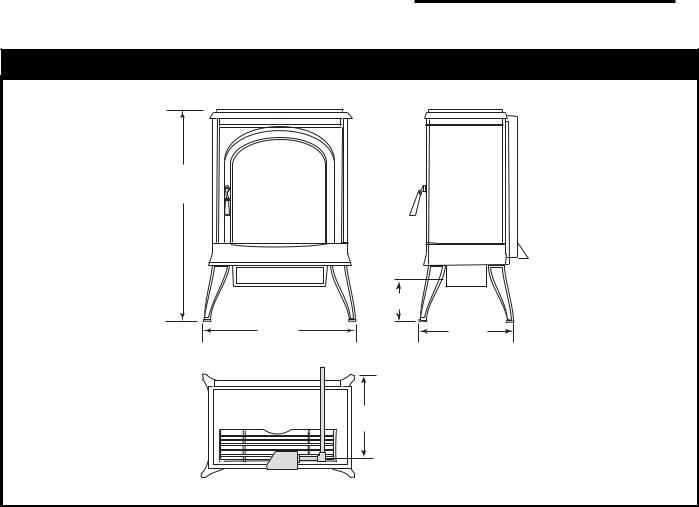
Vermont Castings Jefferson Vent Free Gas Heater
JUVS Dimensions
28¹⁄ " (724mm)
|
Valve |
|
InletC |
|
L |
|
3" (76mm) |
24" |
14¹⁄ " |
(610mm) |
(368mm) |
8"
(203mm)
3447
Fig. 1 Jefferson Vent Free dimensions.
4 |
20003447 |
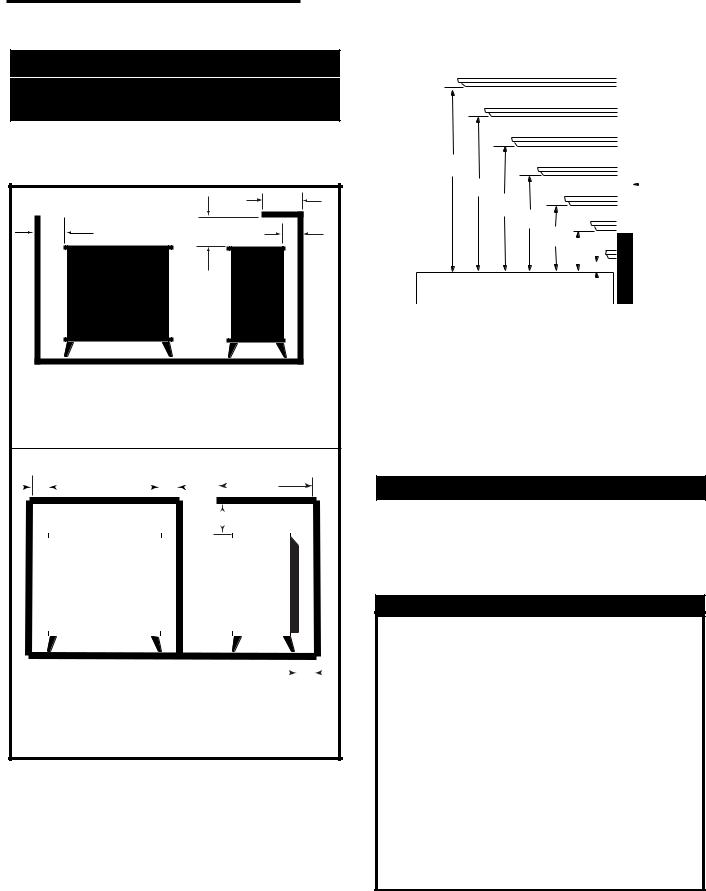
Vermont Castings Jefferson Vent Free Gas Heater
Clearance Requirements
Minimum Clearances to
Combustible Materials
Maintain clearance, (empty space), between combustible materials and the heater as specified below for the appropriate firebox shell being installed.
|
|
D |
B |
A |
C |
|
|
ST101 |
A: Mantel Trim ................................. |
12” (305mm) |
B: Side Wall/Trim .............................. |
4” (102mm) |
C: Rear Wall ...................................... |
4” (102mm) |
D: Max. Mantel Depth ..................... |
12” (305mm) |
Alcove Clearances
B |
|
B |
|
|
|
D |
|
|
|
|
|||
|
|
|
|
|||
|
|
|
|
A |
||
|
|
|
|
|
|
|
|
|
|
|
|
|
|
|
|
|
|
|
|
|
ST103 |
|
|
|
C |
|
|
|
|
|
|
|||
|
|
|
|
|
||
A: Ceiling .................................................. |
|
27¹⁄” (699mm) |
||||
B: Side Wall ................................................... |
|
4” (102mm) |
||||
C: Rear Wall .................................................. |
|
4” (102mm) |
||||
D: Max. Alcove Depth ................................ |
|
48” (1219mm) |
||||
Fig. 2 Minimum wall clearances
|
|
|
|
|
|
|
|
|
|
|
|
|
|
|
|
A |
|
|
|
|
|
|
|
|
|
|
|
|
|
B |
|
|
|
|
|
|
|
|
|
|
|
|
|
|
C |
|
|
|
|
|
|
|
|
|
|
|
S |
|
D |
|
|
|
|
|
|
|
|
|
|
|
|
|
|
|
|
|
|
|
|
|
|
|
|
|
T |
|
|
|
E |
|
|
|
|
Wall |
|
||
|
|
|
|
|
|
|
|
|
|
||||
|
U |
|
|
|
|
|
|
F |
|
|
|
|
|
|
|
V |
|
|
|
|
|
|
|
|
|||
|
|
|
|
|
|
|
|
|
|
|
|
||
|
|
|
W |
|
|
|
|
|
|
|
|
|
|
|
|
|
|
X |
G |
|
|
|
|
||||
|
|
|
|
|
|
|
|
|
|
||||
|
|
|
|
|
|
|
|
Y |
|
|
|
FP599a |
|
|
|
|
|
|
|
|
|
|
|
|
|||
|
|
|
|
|
|
|
|
|
|
|
|
||
|
|
|
|
|
|
|
|
|
|||||
|
Mantel |
|
|
|
|
|
|
Mantel from |
|||||
Ref. |
Shelf Depth |
|
Ref. |
|
|
|
|
Stove Top |
|||||
A |
12” (305mm) |
|
S |
|
|
|
|
12” (305mm) |
|||||
B |
10” (254mm) |
|
T |
|
|
|
|
10” 254mm) |
|||||
C |
8” (203mm) |
|
U |
|
|
|
|
8” (203mm0 |
|||||
D |
6” (152mm) |
|
V |
|
|
|
|
6” (152mm) |
|||||
E |
4” (102mm) |
|
W |
|
|
|
|
4” (102mm) |
|||||
F |
2” (51mm) |
|
X |
|
|
|
|
2” (51mm) |
|||||
G |
1” (25mm) |
|
Y |
|
|
|
|
1” (25mm) |
|||||
|
|
|
|
|
|
|
|
|
|
|
|
|
|
Hearth Requirements
The JUVS must be installed on rigid flooring. If the appliance is installed on any combustible surface other than wood flooring, such as carpet or tile, a metal or wood panel must be installed to extend the full length and width of the unit.
W A R N I N G
•Do not install this heater in a bathroom or bedroom.
•Installation of this heater must conform with Local Codes or in the absence of Local Codes, with the National Fuel Gas Code, ANSI Z223.1.
•This heater creates warm air currents. These currents move heat to wall surfaces next to the heater. Installing the heater next to vinyl or cloth wall coverings or operating the heater where impurities in the air such as tobacco smoke exist, may discolor walls.
•Do not use a blower insert, heat exchanger insert or other accessory not approved with this heater.
20003447 |
5 |
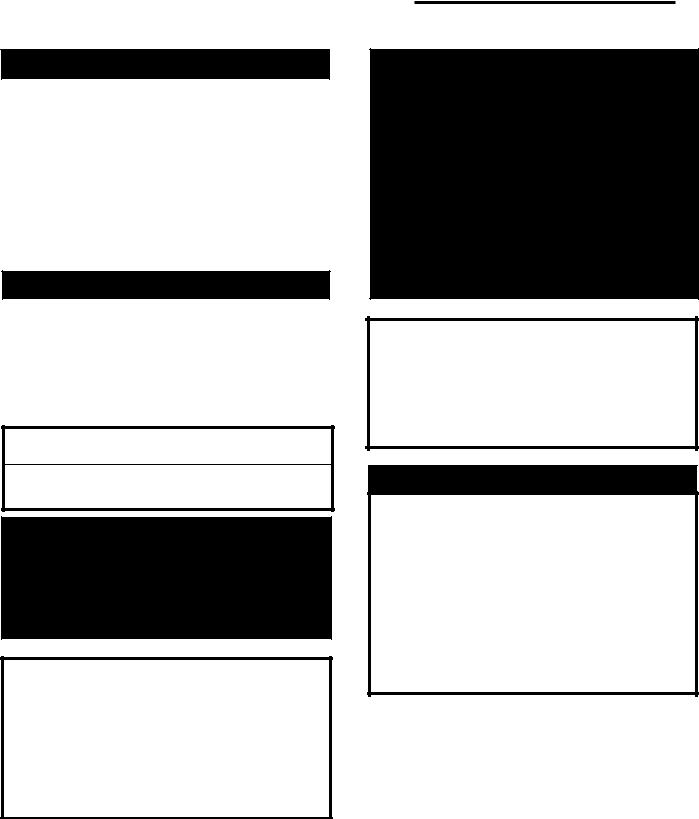
Vermont Castings Jefferson Vent Free Gas Heater
Gas Specifications
|
|
|
|
Max. |
Min. |
|
|
|
|
Input |
Input |
|
|
|
|
||
Model |
Fuel |
Gas Control |
BTU/h |
BTU/h |
|
JUVSRN |
Nat. |
|
Millivolt |
28,000 |
20,000 |
JUVSRP |
Prop |
|
Millivolt |
28,000 |
21,000 |
JUVSMN |
Nat |
|
Millivolt |
28,000 |
18,500 |
JUVSMP |
Prop |
|
Millivolt |
28,000 |
18,500 |
Firebox weight / shipping |
110 lbs. |
|
|||
Gas Inlet and Manifold Pressures
|
|
Natural |
LP (Propane) |
Inlet Minimum |
|
5.5” w.c. |
11” w.c. |
Inlet Maximum |
|
14” w.c. |
14” w.c. |
Manifold Pressure |
|
3.5” w.c. |
10” w.c. (MP) |
|
|
|
11” w.c. (RP) |
|
|
|
|
JUVSR & JUVSM Vent-Free
Certified to:
ANSI Z21.11.2a-2001
Unvented Heaters
The installation of your Vermont Castings stove must conform with local codes, or in the absence of local codes, with the National Fuel Gas Code ANSI Z223.1 - latest edition. (EXCEPTION: Do not derate this appliance for altitude up to 4,500 feet (1,370m). Maintain the manifold pressure at 3.5” w.c. for Natural Gas and 11.0” w.c. for LP Gas.
This appliance may be installed in an aftermarket* manufactured (mobile) home, where not prohibited by state or local codes.
This appliance is to be used only with the type of gas specified on the rating plate which is attached to the rear panel. This appliance is not convertible for use with other gases.
*Aftermarket: Completion of sale, not for purpose of resale, from the manufacturer.
High Elevations
Input ratings are shown in BTU per hour and are certified without deration from elevations up to 4,500 feet (1,370m) above sea level.
Nuisance outages may occur at altitudes above 4,500 feet (1,370m) if dirt, dust, lint and/or cobwebs are allowed to accumulate on burner and/or ODS pilot. Monthly inspection and cleaning is recommended for altitudes above 4,500 feet (1,370m)
For elevations above 4,500 feet (1,370m), installations must be in accordance with the current ANSI Z223.1 and/or local codes having jurisdiction.
WARNING: Improper installation, adjustment, alteration, service or maintenance can cause injury or property damage. Refer to this manual for correct installation and operational procedures. For assistance or additional information consult a qualified installer, service agency, or the gas supplier.
Odor During Operation
Neither natural gas nor propane gas give off an odor when burned. The nature of a vent free combustion system, however, is such that odors may occasionally be produced during heater operation when impurities exist in the immediate area. Cleaning solutions, paint, solvents, cigarette smoke, candles, adhesives, new carpet or textiles, etc., all can create fumes. These fumes may mix with combustion air and can create odor. Such odors will disappear over time, however the condition can be alleviated by opening a window or otherwise providing additional ventilation to the area.
6 |
20003447 |
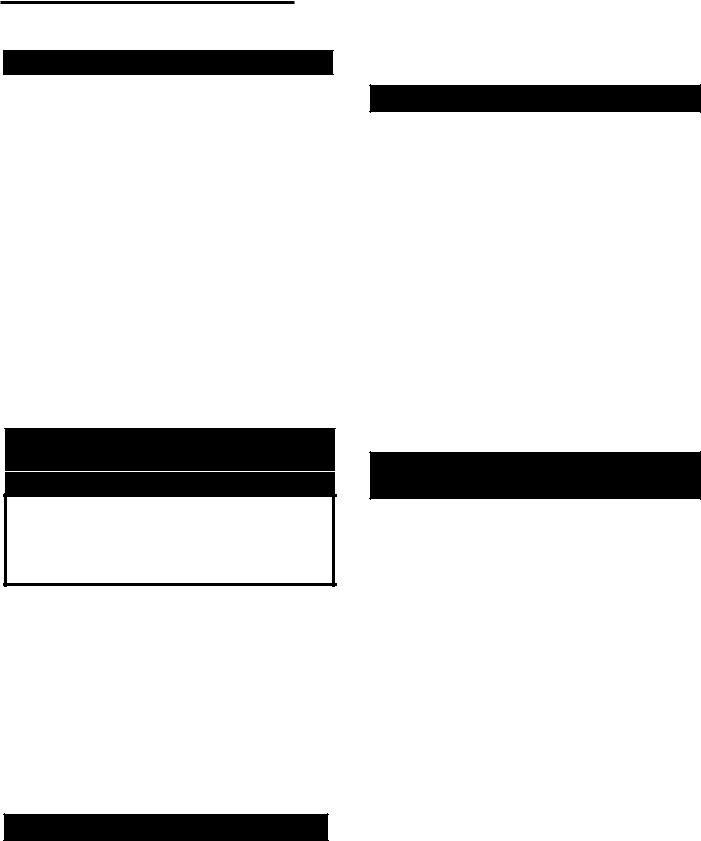
Vermont Castings Jefferson Vent Free Gas Heater
Vent Free Features
The JUVS Gas Heater is an unvented gas appliance tested and listed to the ANSI standard Z21.11.2a.2001. The Vent Free Gas Heater is configured to use Natural Gas, (JUVSRN, JUVSMN ) or Propane (JUVSRP, JUVSMP). Because these heaters are clean-burning and highly energy-efficient, no venting system is required.
The JUVS is shipped fully assembled with the exception of the log set. The log set is assembled during installation.
The JUVS is equipped with a Honeywell control valve that allows thermostatic control, on/off switch or a remote switch (not supplied).
The JUVS model incorporates variable regulators that allow you to adjust burner heat output between HIGH, (28,000 BTU), and LOW, (20,000 BTU). See the Operation Section for details.
The standing pilot incorporates an Oxygen Depletion System (ODS/pilot) which shuts off gas flow to the burner in the event that sufficient fresh air becomes unavailable for continued safe operation.
Fresh Air Requirements for Combustion and Ventilation
W A R N I N G
This heater must have fresh air for proper operation. If it does not, poor fuel combustion could result. Read the following instructions to ensure proper fresh air supply for this and other fuelburning appliances in your home.
Modern construction standards have resulted in homes that are highly energy-efficient and that allow little heat loss. Your home needs to breathe, however, and all fuel-burning appliances need fresh air to function properly and safely. Exhaust fans, clothes dryers, fireplaces and other fuel burning appliances use the air inside the building. If the available fresh air supply is insufficient to meet the demands of these appliances, problems can result.
The JUVS heater has specific fresh air requirements. You must determine that these requirements will be met within the space where the appliance will be installed. The following information will help you insure adequate fresh air is available for the heater to function properly.
Provide for Adequate Ventilation
Any space within a home can be classified in these categories:
1)Unusually tight construction
2)Confined space
3)Unconfined space
First, determine which classification defines the intended installation space.
Unusually Tight Construction
You must provide additional fresh air if the space falls into this classification. Unusually Tight Construction is defined as construction wherein:
a.Walls and ceilings exposed to the outside atmosphere have a continuous water vapor barrier with a rating of one perm or less, with openings gasketed or sealed, and
b.weather stripping has been added on openable windows and doors and
c.caulking or sealants are applied to areas such as joints around windows and door frames, between sole plates and floors, between wall and ceiling joints, between wall panels, at penetrations for plumbing, electrical and gas lines and at all other openings.
If your home meets all of the above criteria, you must provide additional fresh air for the appliance as detailed on Page 7.
If your home does not meet the above criteria, follow the procedure below.
Determine If You Have a Confined or Unconfined Space
Use the following formula to determine if you have a confined or unconfined space.
Space is defined as the room in which you will install the heater, plus any adjoining rooms with doorless passageways or ventilation grilles between the rooms.
The National Fuel Gas Code defines a confined space as a space whose volume is less than 50 cubic feet per 1,000 BTU per hour input rating (4.8m3 per Kw) of the aggregate (total) input rating of all appliances installed in that space and an unconfined space as a space whose volume is not less than 50 cubic feet per 1,000 BTU per hour (4.8m3 per Kw) of the aggregate input rating of all appliances installed in that space. Rooms communicating directly with the space in which the appliances are installed, through openings not furnished with doors, are considered a part of the unconfined space.
1. Determine the volume of space (length x width x height). Include adjoining rooms connected by doorless passageways or ventilating grilles.
Example: A room that is 18’ x 12’ x 8’ has a volume of 1728 cubic feet. An adjoining open kitchen that is 10’ x 12’ x 8’ has a volume of 960 cubic feet. An adjoining open dining room is 12’ x 12’ x 8’ with a volume of 1152 cubic feet. The total volume is 3840 feet. (1728 + 960 + 1152)
20003447 |
7 |
